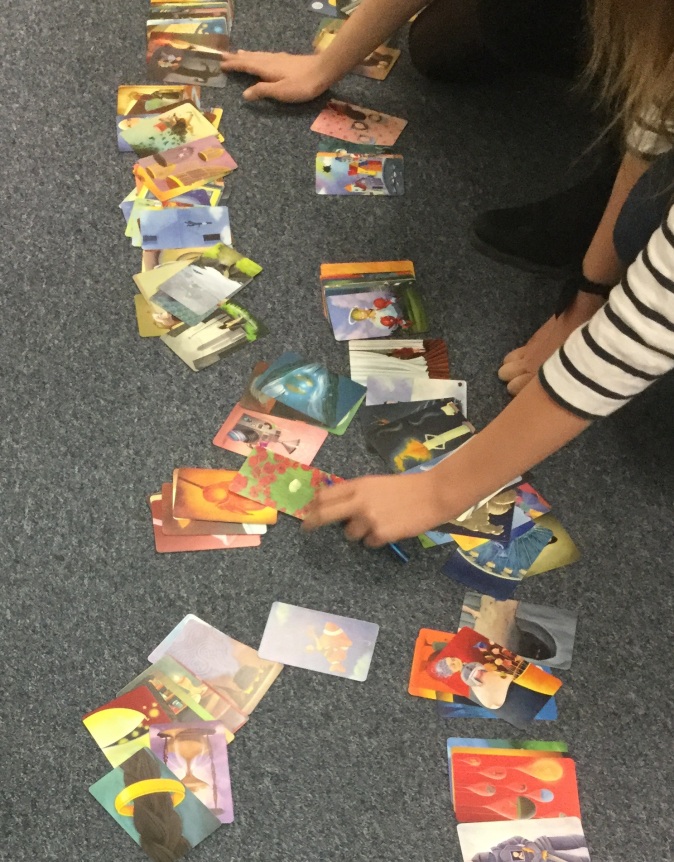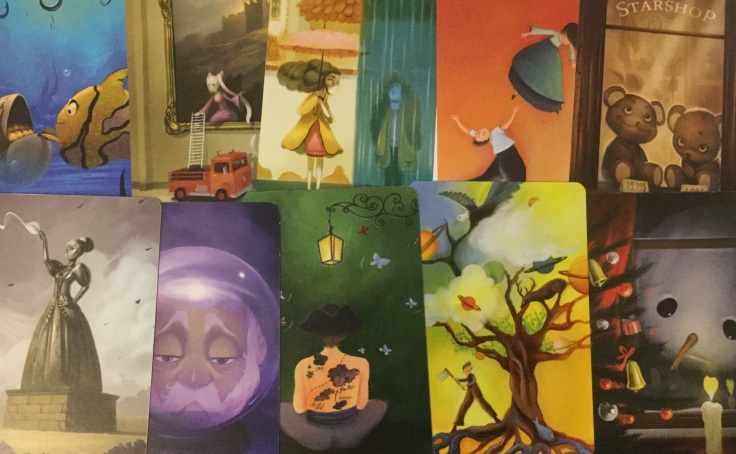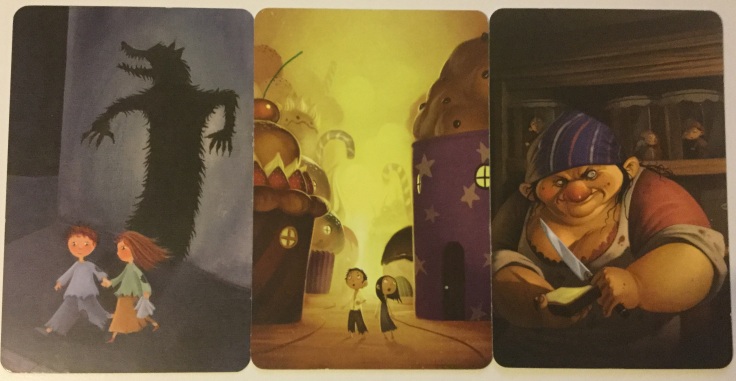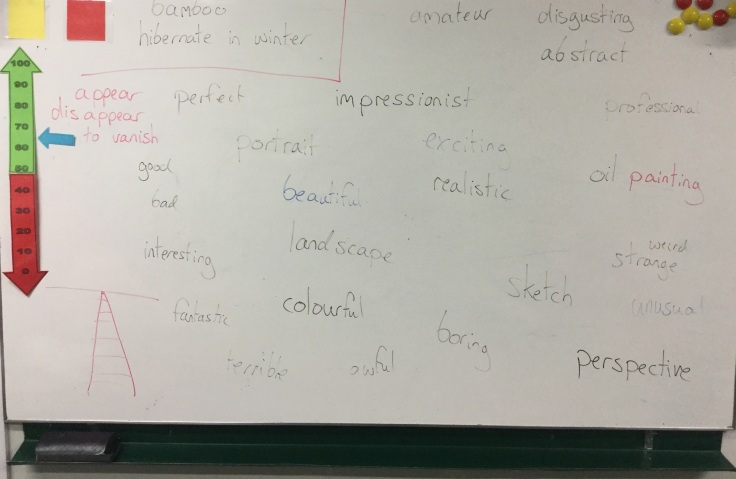Dixit is a popular storytelling board game that includes eighty colourful and imaginative picture cards. In this post I’m looking at how you can use those cards in some interesting ways.
How to play
I have often played Dixit with a class as a short break in a lesson, for early finishers after a test or as a way to practice a particular grammar point. Here is a short video I’ve found that shows you how to play:
While I like playing Dixit as it’s shown above, the rest of this post is going to look at how you can use the 80 beautifully illustrated cards in other ways.
Micro-writing and short stories
The cards in Dixit can be inspirational prompts that help students get started on short writing tasks. In this picture some intermediate students are choosing a card to help them write a story.

In this lesson we are practising the narrative tenses. Students are asked to write a short story which includes the past simple, past continuous and past perfect. Students look through the cards and select one for their story. Once they’ve picked, students talk in pairs and explain why they chose their picture.
Next, students decide if the picture shows the beginning, middle or end of the story. After they’ve made some notes and discussed their ideas with their partner they’re ready to start writing. In this lesson students have to start their story at the end (to encourage use of the past perfect).
When students have finished, we spread the stories around the room with their pictures. Students walk around the room in pairs, looking at each picture and making predictions before they begin reading, then discussing the stories after they’ve read them.
I find the cards really help some students who otherwise find it difficult to come up with ideas, while also adding a light restriction for students who would otherwise write about the same topics every time.
Quick mingle
With higher level students you can try a more challenging task. I used the following activity to practise second, third and mixed conditionals with an upper intermediate class.
Each student chooses a card and writes a conditional that describes it. For example, if a student picked the card in the bottom right they could write:
“If the snowman had been inside, he would have already melted.”

Now, students mingle. With each new partner they show their card and ask them to come up with a conditional. Their partner gets a point if they come up with a sentence that includes a logical and correct conditional. They also get a bonus point if their sentence is the same, or very similar, to the sentence that the student wrote down at the start.
Once the students have spoken to everyone in the class they sit down in pairs. First, they tell each other all of the different sentences other students made up for their card. Then, collect the cards and give students three to five minutes to write down the sentences they made up for other students’ cards during the game.
Spread the cards out on a desk. When students have finished writing they can look at all of the pictures and remind themselves of the sentences they may have forgotten. This game helps students to create memorable sentences that are linked to vivid pictures, which also helps the language structures to become more memorable.
Selecting a theme
For this short activity I’ve picked a few cards that fit a theme; the children in each picture are in some kind of fairy tale. In this activity we are practising ‘should’ and ‘ought to’ for giving advice with younger learners.

I spread the cards around the room. Students walk around in pairs and think of what advice they would give the children. We then discuss the ideas in open feedback. As a follow up task students work in pairs to make posters giving advice for children in fairy tales, including a bullet point list of practical tips.
This simple idea could be adapted to different language points, like expressing opinions, making comparisons, or describing feelings. The white-board below includes vocabulary that students were using to describe artwork which they then used to describe a selection of Dixit cards.

If you don’t have access to a copy of Dixit you could use these same ideas with some carefully chosen pictures. However, I do recommend buying a set. To save money you could get a copy of one of the expansion sets instead, which still come with 80 cards but no board or player tokens (a viable option if you’re only buying them for the artwork).
Thanks for reading!
You can follow the site by clicking the box below the comments, find me on Facebook and follow me on Twitter.

August 24, 2017 at 1:27 pm
What an inspirational post! I’m planning to buy the game for myself and use it in my lessons, too.
LikeLiked by 1 person
August 24, 2017 at 1:34 pm
Lovely ideas! Thanks a bunch, Mike!
LikeLiked by 1 person
August 26, 2017 at 5:54 am
So much help for my students who need some sort of inspiration for writing… Thank you for the support!
LikeLiked by 1 person